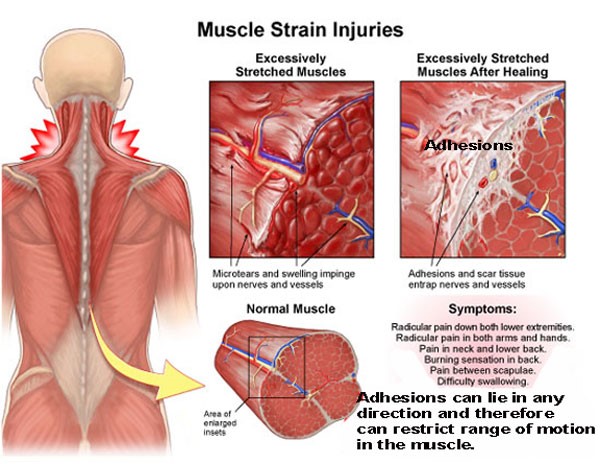When you initiate your health and fitness journey, you may frequently experience muscle sore. It doesn’t matter whether you are a beginner or a seasoned athlete; it is quite important to understand what muscle sore is, why it takes place, and how you can manage it well. In this blog, you will gain an understanding of what muscle soreness is, why it takes place, and most importantly, how to deal with it effectively.
What is Muscle Soreness?
The Science Behind Soreness
This condition is known as delayed onset Muscle pain, or DOMS. It occurs typically when you involve your body in exercises that are not regular activities of your body. The soreness usually peaks 24 to 72 hours after exercise and can be minor aches and pains or even serious.
Lactic acid tears minute fibers in your muscles during exercise, especially strength training and high-intensity exercise. Your body responds to these micro-tears with inflammation. Yes, it hurts, but that’s what it’s supposed to do to build muscles and adapt to them.
Types of Muscle Soreness
Acute Soreness: This is soreness experienced during or right after exercise. The most obvious cause is lactic acid accumulation which disappears quickly.
Delayed Onset Muscle Soreness (DOMS): As we discussed previously, DOMS occurs after a bout of exercise with some intensity and can persist for several days. This is soreness that most people refer to when they say they’re having muscle pain.
Why Do You Experience Muscle Soreness?
The Role of Intensity and Duration
The more intense and the longer your workout, the greater the chance of Muscle pain. High-impact events such as weightlifting, sprinting, or plyometric exercises create excellent scenarios for muscle fatigue and subsequent soreness.
Adaptation and Overload
Your muscles adapt to the stress placed upon them. The more you challenge yourself with new exercises, increased weights, or longer durations, the more you stimulate growth and adaptation. So that means you will feel sore as your body adjusts.
Muscle Soreness Management
Listen to Your Body
One of the best practices is to listen to your body. If you feel that there is great pain wherein it has compromised your daily activities and exercising, take it easy or consult a professional. However, if it’s but mild soreness, proper care will be enough to handle it.
Active Recovery
Engagement in active recovery sometimes alleviates Muscle painHere are some activities that you can consider:
Light Aerobic Exercise: Those light-intensity aerobic activities, such as walking, cycling, or swimming, can increase blood flow and help reduce soreness.
Stretching: Gentle stretching improves flexibility, relieves tension in sore muscles, and improves flexibility.
Hydration and Nutrition
Proper hydration and nutrition are critical components of recovery. Here are some tips:
Drink Hydrate: Adequate water consumption aids in flushing out toxins and supports muscle recovery. Drink water before exercises, exercise, and after workouts.
Eat Protein: The body requires protein to heal. Load up on lean meats, fish, eggs, and plant-based proteins in any meal you eat to help your body heal.
Eating Anti-Inflammatory Foods: Any food high in antioxidants, such as berries, nuts, and leafy greens, will reduce inflammation in the body and promote healing.
Recovery Techniques on Sore Muscles
Foam Rolling
Foam rolling is one of the best self-myofascial release techniques to help break up muscle knots and improve blood circulation. Rolling out sore muscles might help ease tightness and recover faster.
Cold Therapy
This therapy could be with ice packs or cold compresses; it reduces inflammation and deadens soreness. So, apply cold therapy to sore muscles for 15 to 20 minutes after intense workouts.
Heat Therapy
Only after inflammation has subsided, applying heat can further increase blood flow and loosen tight muscles, and you could use an electric pad or have a warm bath to relax tight muscles.
Get Quality Sleep
Getting enough sleep is very significant for repairing muscles. As much as possible, try to get quality sleep of about 7 to 9 hours each day so your body can repair itself. In case you do not get enough sleep, this could impair your recovery and make you experience more muscle aches.
Importance of Warm-up and Cool Down
Warm-up
A proper warm-up before engaging in an exercise prepares your muscles for the activity. You should spend at least 5 to 10 minutes doing dynamic stretches or light aerobic exercise. This enhances blood flow and flexibility, reducing the possibility of soreness as well as the risk of injury.
Cool Down
Cool down after your exercise. This will help your heart rate return gradually to normal and encourage recovery. Add some static stretches and slow movements to stretch out your muscles.
Building a Balanced Fitness Routine
Gradual Progression
It helps to increase the intensity, duration, or frequency of workouts gradually. This way, you minimize soreness and are not more likely to hurt yourself.
Add Variety
Plus, one can avoid overuse injuries by having several groups of muscles involved in a variety of exercises. Strength training, cardio, flexibility work, and fun activities can be mixed and matched into a fitness routine.
Conclusion: The End
Feeling sore muscles is part of the journey that you have to take to be healthy and fit. Though it sometimes hurts, it is a sign of progression and adaptation. Understanding muscle soreness and recovery techniques facilitates the improvement of performance as well as general well-being.
Remember, everybody will respond differently to working out and, therefore, be patient with yourself. Listen to your body and prioritize recovery as you train toward the way of better health and fitness. End.
So, the next time this familiar ache rises its head, celebrate that it is indeed your body getting stronger. Use the strategies mentioned in this blog to better at handling it and continue with your health and fitness journey!







